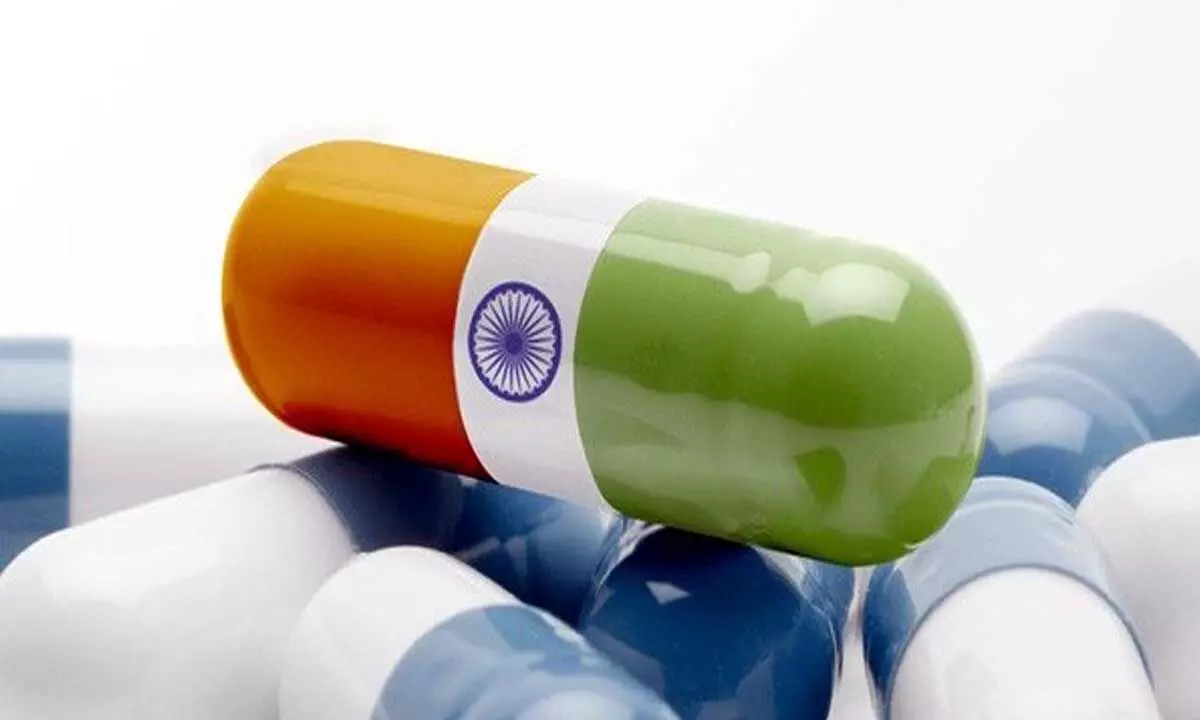Policy changes need of the hour to drive Indian pharma industry to next level
Pharma exports for 2021-22 registered a meager 0.13% growth and has missed the ambitious target set by the govt at the beginning of the year
image for illustrative purpose

Major setbacks to Indian Pharma Ind
• Increase in freight cost amid global turmoil
• Delay in inspections of Indian sites by US FDA
• Warning letters from US drug regulator
• Revival of the Japan and Europe pharma biz during pandemic
• Low US FDA approvals of ANDA in 2021
• Low R&D investments in Indian pharma
• Lack of Policy based reforms, including an exclusive portfolio for pharma sector
According to Union Commerce Ministry, the exports of pharma sector for 2021-22 was $24.47 bn and remain in the 5th position with 5.86% of exports among the top 10 major commodity export from India
For a sector which was dominated by the multinational drug companies until the 1970's, the Indian pharmaceutical industry has come a long way to adorn the epithet of 'the pharmacy of the world'. From a small turnover that can be counted in fingers to a whopping more than Rs. 2 lakh crores at present, the Indian pharmaceutical industry has undisputedly grown by leaps and bounds. From a gross importer of medicines till the early 1980's, the Indian pharmaceutical industry, which consists of more than 10,000 small, medium and big companies, now exports affordable and quality medicines to more than 200 countries across the world, including the developed countries like the US and Europe. Definitely, the Indian pharmaceutical market has seen a huge shift from being MNC dominated to be led by domestic players making medicines accessible not just to patients across India, but also to the entire world. Even for Africa's dreaded diseases like malaria and AIDS, the Indian pharmaceutical companies made available high quality, safe, efficacious and affordable drugs to its patients. This was possible with the patent policies of the central government in the 70's and 80's which enabled Indian pharmaceutical industry not just to grow in size but reduce prices of life-saving drugs.
The Covid-19 pandemic has once again brought the Indian pharmaceutical and medical devices industries into limelight. Though the industry has been witnessing a stellar performance during the last several years, the Foreign Direct Investment (FDI) into drugs and pharmaceutical industry in the country has seen a decline of 3.2 per cent in the first nine months of the fiscal year 2021-22. The FDI inflow into drugs and pharmaceuticals for the nine months ended December, 2021 stands at $1.21 billion, as compared to $1.25 billion in the same period of last year. During the October to December quarter of 2021-22, the inflow was $647.29 million as against $ 879 million in the corresponding three months of previous fiscal year, reporting a sharp 26.4 percent decline.
The same is the case with exports as the exports of pharmaceuticals for the fiscal year 2021-22 registered a meager 0.13 per cent growth compared to the previous year, and has missed the ambitious target set by the government at the beginning of the year by a huge margin. According to the data released by the Union Commerce Ministry, the exports of drugs and pharmaceuticals for the fiscal year 2021-22 ended March 31, 2022, was $24.47 billion as against $24.44 billion in the previous year. This is at a time when the country's overall merchandise exports have seen a 43.18 per cent increase to $417.81 billion as compared to $291.81 billion in the corresponding 12 months of the previous fiscal year. The year 2020-21 saw an exceptional growth of 18.19 per cent in exports, to $24.4 billion, which is a kind of growth that happened after eight years. Drugs and pharmaceuticals remain in the fifth position with 5.86 per cent of exports among the top 10 major commodity groups that are exported from the country.
During the current fiscal, there were several reasons which impacted the pharmaceutical exports, including the freight cost increase and a decline in exports to the US owing to the pending regulatory inspections in Indian sites by the US Food and Drug Administration. Some of the warning letters issued by the US drug regulator also impacted the exports to the US market. Besides, some of the manufacturers in Japan and Europe also revived their pharma business during the Covid-19 period and started supplying to the US, which is another factor that has impact the Indian exporters.
In yet another setback to the sector, the US FDA approvals of Abbreviated New Drug Applications (ANDA) remained lowest in the year 2021, mainly due to adverse worldwide impact of Covid-19. The US FDA approved only 635 ANDA during 2021 as compared to 761 in the previous year. In the year 2017, US FDA approved 844 ANDAs and slowly started diminishing thereafter. The R&D based Indian pharma majors secured 210 ANDA approvals from US FDA which worked out to 33 per cent of total approvals. Last year Indian companies received 276 ANDA approvals, 36.3 per cent of total approvals. The total tentative approvals were also declined to 116 as against 125 in 2020. The R&D investments always play an important role in getting US FDA approvals. So, the Indian pharmaceutical industry should invest more and more in R&D to get more ANDA approvals from the US FDA.
There can be no two opinions about the growth potential of pharmaceutical and medical devices industries in the country. So, for the growth of these sectors to its full potential, the government should immediately initiate steps to change its policies, including an exclusive central ministry for the sector, to take this promising sector into the next level.

